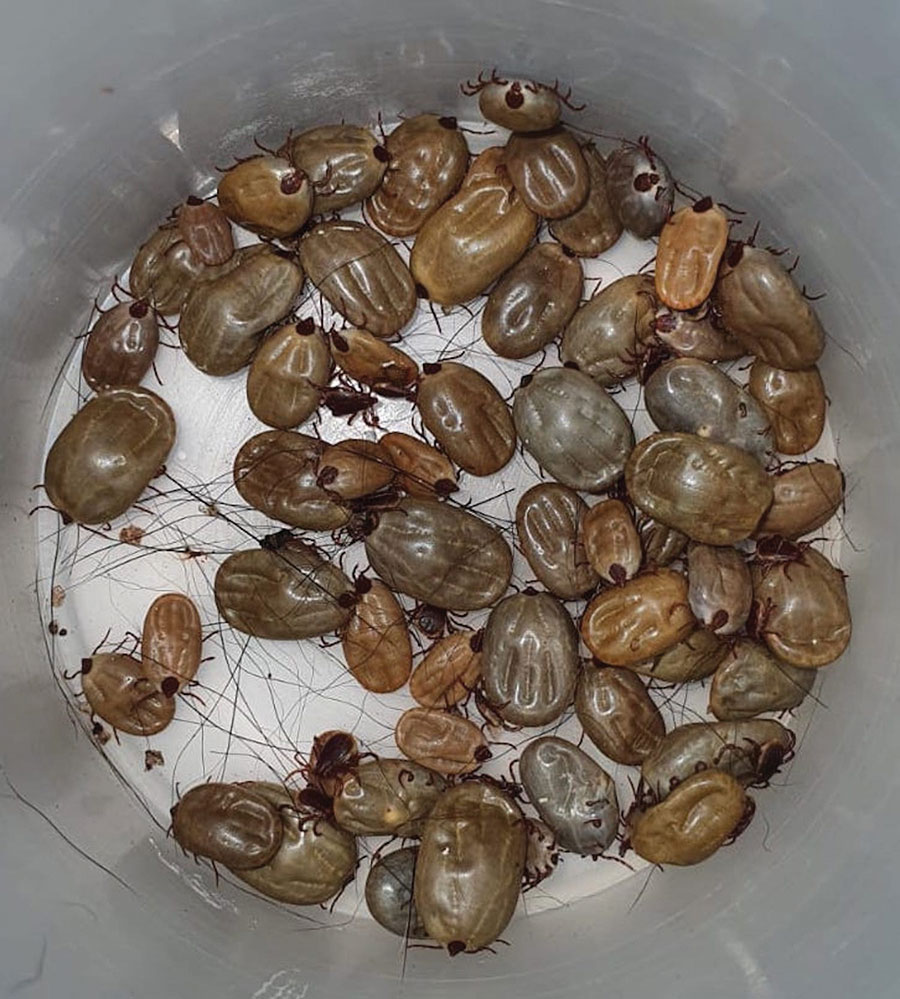Volume 29, Number 9—September 2023
Research Letter
Rickettsial Disease Outbreak, Mexico, 2022
Figure

Figure. Brown dog ticks collected by the vector control department of Nuevo Leon, Mexico, in a hard-to-reach municipality.
Page created: August 09, 2023
Page updated: August 20, 2023
Page reviewed: August 20, 2023
The conclusions, findings, and opinions expressed by authors contributing to this journal do not necessarily reflect the official position of the U.S. Department of Health and Human Services, the Public Health Service, the Centers for Disease Control and Prevention, or the authors' affiliated institutions. Use of trade names is for identification only and does not imply endorsement by any of the groups named above.